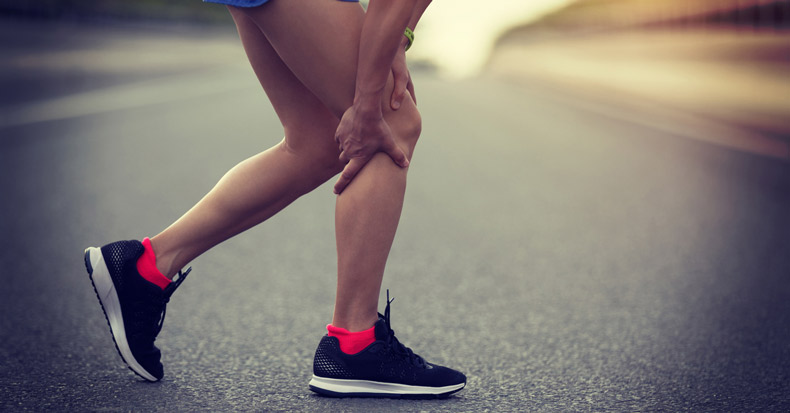Running is a popular recreational activity, and it’s an effective form of aerobic exercise for both young and old. It’s estimated that 50-60 million Americans regularly run or jog on tracks, city streets, or trails. However, running also carries a risk for injury. It’s estimated that at least half of recreational runners will sustain an injury each year, and a common cause of running-related pain is runner’s knee.
Runner’s knee is an umbrella term used to characterize a variety of symptoms such as pain in and around the kneecap usually during activity or after prolonged sitting with the knees bent; a sensation of weakness or an unstable knee joint; rubbing, grinding, or clicking sounds in the area of the kneecap while bending or straightening the knee; and tenderness to the touch. Primarily, runner’s knee is due to patellofemoral pain syndrome. However, other conditions that affect the knee also fall under the runner’s knee umbrella such as chondromalacia patella and iliotibial band friction syndrome.
When a patient visits a chiropractic office for runner’s knee, they’ll complete a detailed health history as well as questionnaires about the location and intensity of their current pain and any treatments they’ve already tried. Their doctor of chiropractic will then conduct a physical examination that will include palpation around the kneecap, joint line, and back of the knee, an assessment of the muscles in the front and back of the thigh and lower leg, and a gait analysis looking for excessive pronation or other abnormal biomechanics including the hip, pelvis, and spine. Diagnostic imaging may be appropriate in specific cases.
Potentially, there may be multiple contributing causes for the patient’s symptoms such as overuse, misalignment of the knee joint, muscle imbalances, and issues of the foot/ankle that will all need to be addressed for the patient to achieve a satisfactory result. Treatment will typically involve a multimodal approach that may include manual therapies to restore normal movement to affected joints, rest or activity modifications, anti-inflammatory measures (such as dietary changes and ice), exercises to address weak muscles, stretches for tight muscles, footwear changes, and foot orthotics or arch supports if excessive rolling of the ankle is present. To avoid re-injury, the patient may be instructed to gradually return to their normal running activities over time, though the exact timeline may vary from patient to patient.
